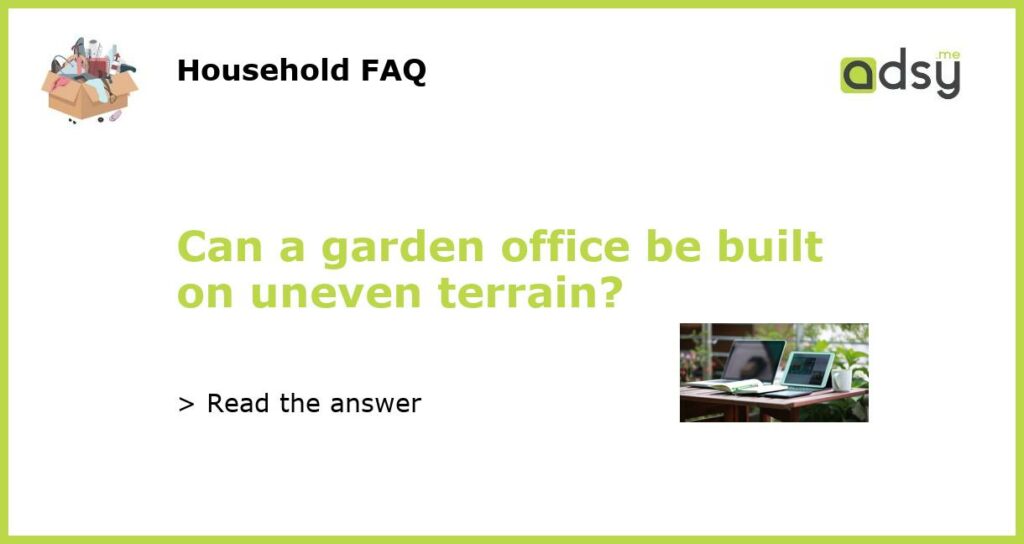Yes, a garden office can be built on uneven terrain
When it comes to building a garden office, the terrain of your backyard or garden may not always be perfectly flat. While it may seem challenging to construct a structure on uneven ground, there are several methods and techniques available that can help you overcome this obstacle.
Evaluating the terrain
The first step in building a garden office on uneven terrain is to evaluate the slope or unevenness of the ground. This will help you determine the degree of difficulty and the level of adjustment needed for the construction.
If the unevenness is minimal, you may only need to make minor adjustments such as leveling the ground with soil or gravel. However, if the slope is more significant, you may need to consider more intensive methods such as terracing or building a foundation that can accommodate the uneven ground.
Terracing the area
Terracing is a popular technique used to create flat or level areas on sloped terrain. It involves creating multiple flat platforms, or terraces, that are supported by retaining walls. This method can be used to build a garden office on uneven terrain by leveling one or more terraces to provide a stable foundation for the structure.
To achieve this, you would need to hire a professional landscaper or builder who specializes in terracing. They will assess the slope and design a terracing system that will provide the necessary support for your garden office. By creating flat surfaces, terracing not only ensures stability but also enhances the aesthetic appeal of your outdoor space.
Building a raised foundation
If terracing is not an option or if you prefer a different approach, you can consider building a raised foundation for your garden office. This involves constructing a deck or platform that is elevated off the ground, providing a level surface for the structure.
To build a raised foundation, start by determining the desired height of the foundation and the size of the platform. Next, install support beams or posts at regular intervals to support the structure. The beams or posts should be placed on solid ground or secured with concrete footings to ensure stability.
Once the support system is in place, you can then construct the platform using materials such as wood or composite decking. This will provide a stable and level surface for your garden office, even on uneven terrain.
Using adjustable foundation systems
If you are looking for a more flexible and adjustable solution, you can consider using adjustable foundation systems. These systems are designed to accommodate uneven terrain by allowing you to adjust the height and level of the foundation as needed.
Adjustable foundation systems typically use adjustable pedestals or jacks that can be raised or lowered to compensate for the sloped ground. This allows you to create a level surface for your garden office without the need for extensive excavation or grading.
Some adjustable foundation systems also offer additional features such as built-in drainage for improved water management and ventilation for better air circulation. These systems can provide a cost-effective and efficient solution for building a garden office on uneven terrain.
Consulting with professionals
Before embarking on any construction project, it is always recommended to consult with professionals such as architects, builders, or landscape designers. They will have the necessary knowledge and expertise to assess the terrain and provide you with the best options for building a garden office on uneven ground.
A professional can help you navigate the challenges of uneven terrain, recommend suitable techniques or products, and ensure that your garden office is built safely and efficiently.
Remember to obtain the appropriate permits and approvals from local authorities before starting any construction work. Compliance with building codes and regulations is essential to ensure the structural integrity and safety of your garden office.

